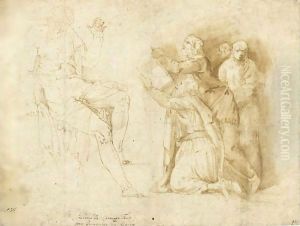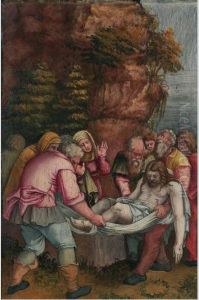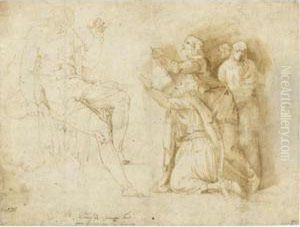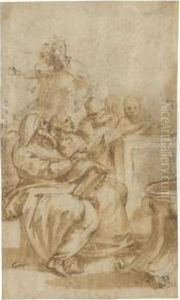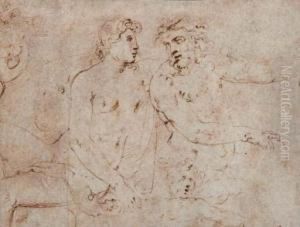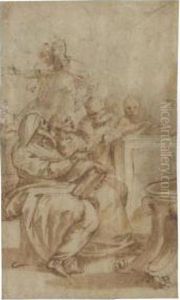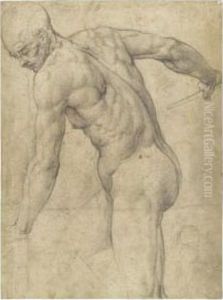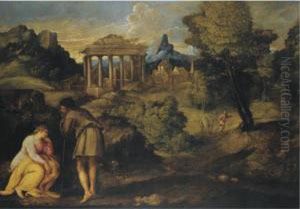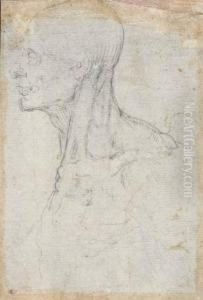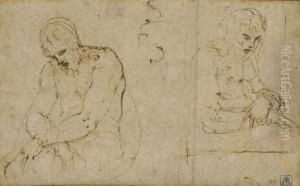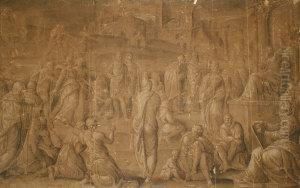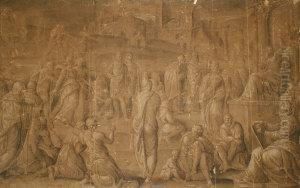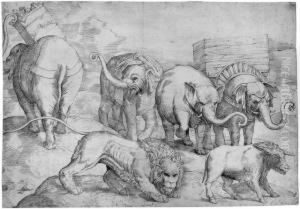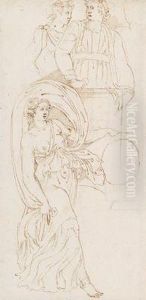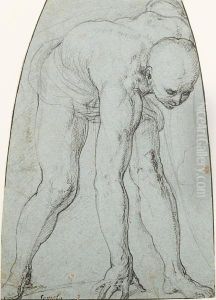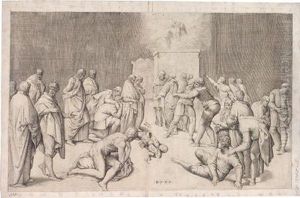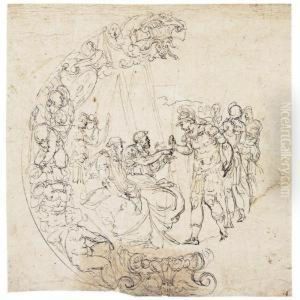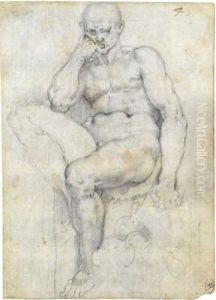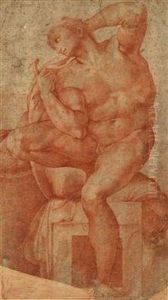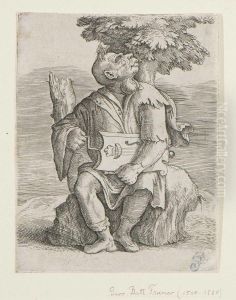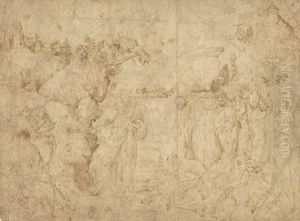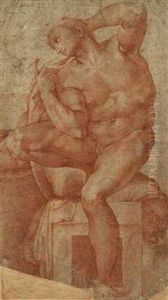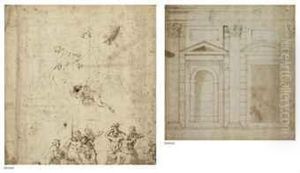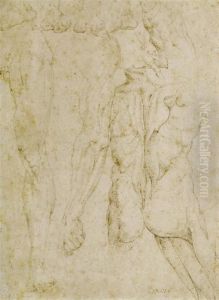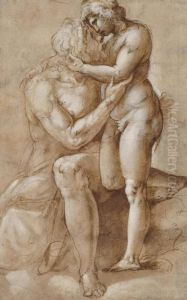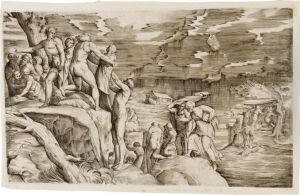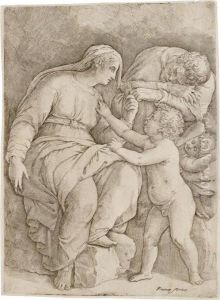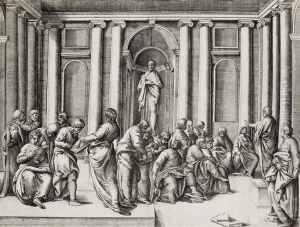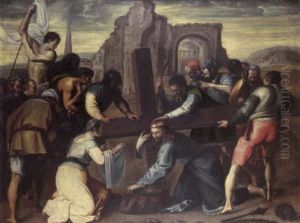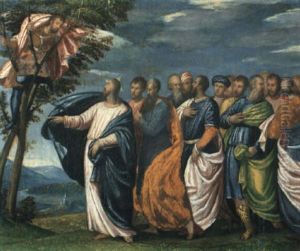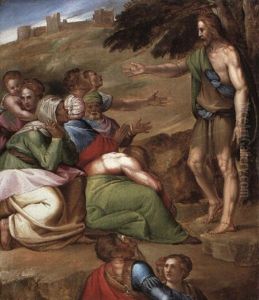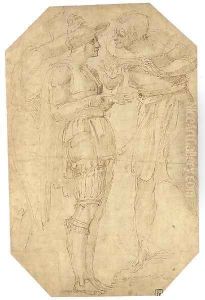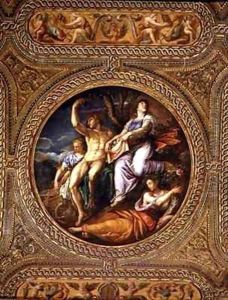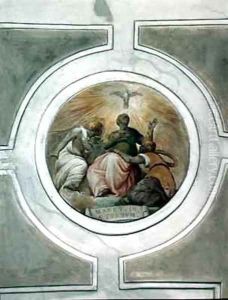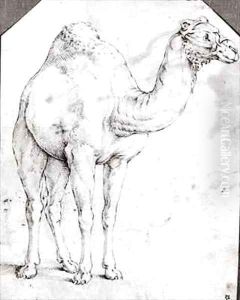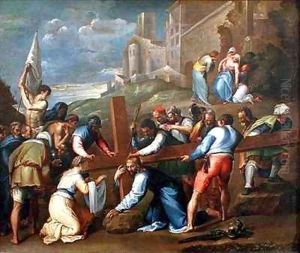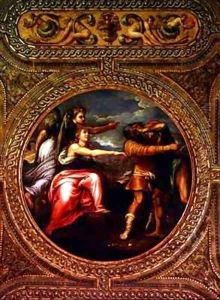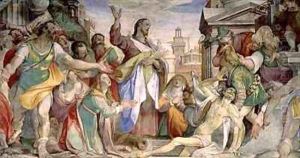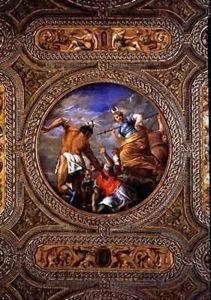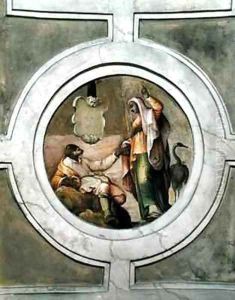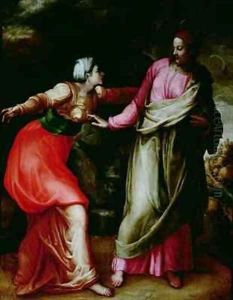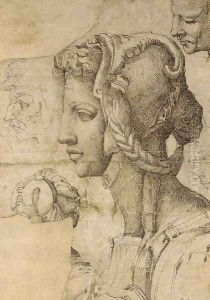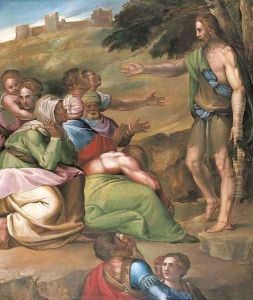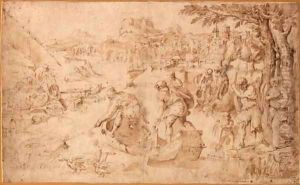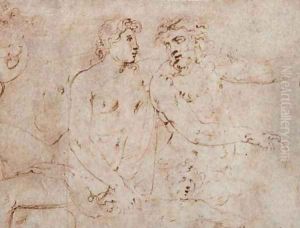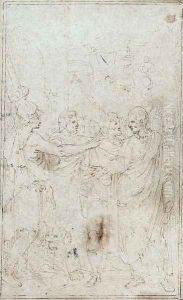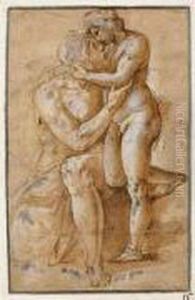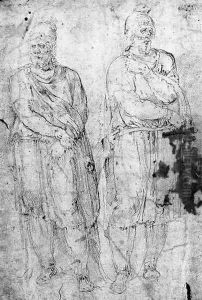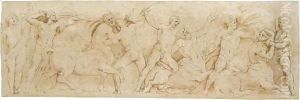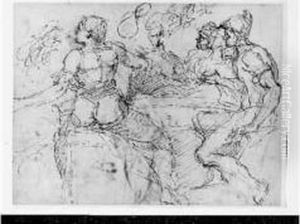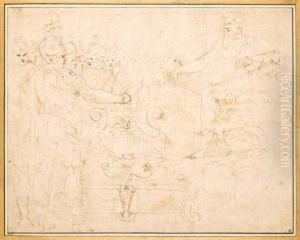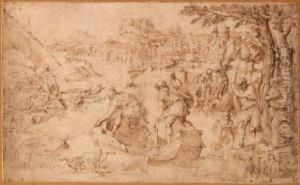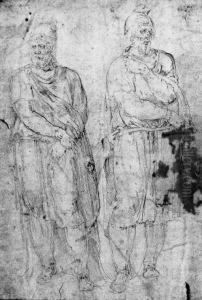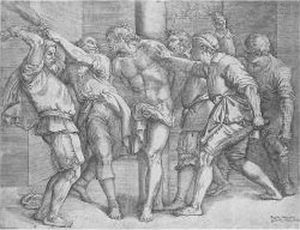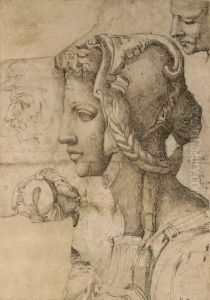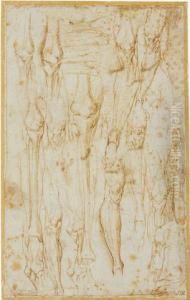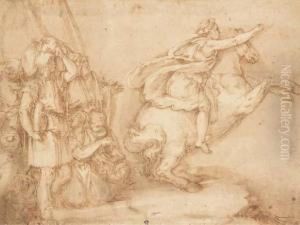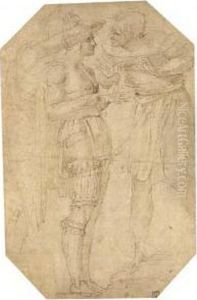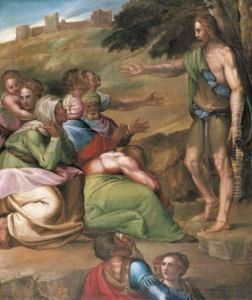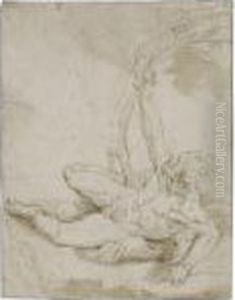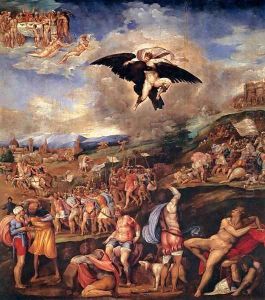Battista Franco Paintings
Battista Franco, also known as Il Semolei or Battista Franco Veneziano, was an Italian painter, draughtsman, and etcher of the Renaissance period. He was born around 1510 in Venice or in the Veneto region. Franco's artistic talents became evident at an early age, and he likely received his initial training in the Venetian school, which was renowned for its use of color and light.
Franco traveled to Rome, probably in the mid-1530s, where he was influenced by the works of Michelangelo, Raphael, and other masters of the High Renaissance. During his time in Rome, he was involved in various projects and created a number of paintings and drawings that reflected the grandeur and dynamism of the period. His style is characterized by the robust figures and dynamic compositions that were typical of the Roman school.
Despite his talents, Battista Franco did not achieve the same level of fame as some of his contemporaries. However, he was a respected artist in his time, known for his skill in both painting and printmaking. He was one of the early Italian practitioners of etching, a technique which allowed him to produce works with a high degree of detail and expressiveness.
After spending a significant period in Rome, Franco returned to Venice around 1550. There, he continued to work and received commissions for both religious and secular subjects. Among his notable works in Venice are the frescoes in the Ducal Palace and the historical scenes that he painted in the Biblioteca Marciana.
Battista Franco's work bridges the High Renaissance and the emerging Mannerist style. While his paintings and drawings exhibit the clarity and balance of the earlier Renaissance, they also show an inclination towards the more elongated figures and complex compositions that would come to define Mannerism.
Franco's contributions to Italian art were cut short by his untimely death in 1561. Despite a relatively brief career, his works remain a testament to the transition between Renaissance ideals and the evolving aesthetic that would dominate the second half of the 16th century. His legacy is preserved in the form of paintings, drawings, and etchings that can be found in various collections and museums across the world.
